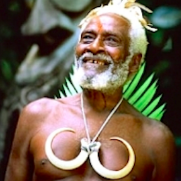Beetle Rolling A Ball
-
Recently Browsing 0 members
- No registered users viewing this page.
Announcements
-
Topics
-
-
Popular Contributors
-
-
Latest posts...
-
1
Air Conditioning Bill Question/Not running at all
Do you get your bill directly from MEA? MEA can install a check-meter, but if they find no problem then there's a charge, so a few tests first would be a good idea. You should be able to see on the bill how many units (kWh) you used, it's a much better way of determining usage than the cost. Do you have access to read your meter? Assuming you do turn off the main switch in your condo, read the meter then go out for a few hours, your fridge/freezer will be fine for a few hours with no power, when you return read your meter again. Of course it should be the same. If it has moved then you have someone/something using your energy. Now turn on your main switch, leave your condo exactly as you did when you were away and do the same thing as before, this time you should have used some energy. How much did you use over what time period? you should be able to use this figure to approximate how much your empty place was using each day you were away. -
20
Immigration Labour Faces Heat as Small Boat Migrant Crossings Hit 50,000
I lived in Indonesia and Moslem Nigeria for 5 years and echo your sentiments. However, Middle East and some of the Subcontinent Moslems are not as tolerant as SE Asian Moslems IMO. I'd be wary of allowing too many ME Moslems. Fortunately in Australia, we instituted border controls with ongoing pushback, but still worry we've allowed too many migrants from the ME, many of whom are ultimately Jihadists. I'd be much more comfortable if Islam went through some reformation - I mean they're so focused on Allah being the only God and having to kneel to pray 5 times per day. Is this really 21st century humanity? -
3
-
6
Accident Teenager Injured in Pattaya Collision With American Motorcyclist
It's a 'fast' stretch of road. -
53
Video 20 Foreigners Assault Thai Shop Owner in Phuket Dispute
Not only possible but highly probable, Its not unlikely that they profited nicely out of each and every incident -
53
Video 20 Foreigners Assault Thai Shop Owner in Phuket Dispute
Who are, according to you? Don’t be shy now……
-
-
Popular in The Pub









Recommended Posts
Create an account or sign in to comment
You need to be a member in order to leave a comment
Create an account
Sign up for a new account in our community. It's easy!
Register a new accountSign in
Already have an account? Sign in here.
Sign In Now